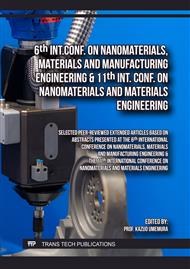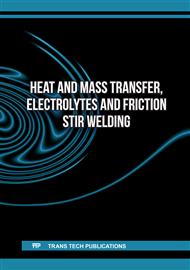p.3
p.9
p.15
p.21
p.29
p.35
p.45
p.55
Rotary Friction Welding of AA6061 Aluminum Alloy: An Experimental and Simulation Investigation
Abstract:
The purpose of this study is to evaluate the accuracy of a simulation model for the Rotary Friction Welding (RFW) process of AA6061 aluminum alloy. RFW, widely used in the aerospace and automotive industries, is known for producing strong welds with minimal heat-affected zones (HAZ). Using ABAQUS software, a numerical model was developed to simulate key aspects of the process, such as heat generation, material flow, and axial shortening. The simulation results were compared with experimental data and previous studies to validate the model’s accuracy. The comparison demonstrated the model’s ability to closely replicate reality welding conditions, making it a reliable tool for optimizing welding parameters and improving the RFW process for AA6061.
Info:
Periodical:
Pages:
9-14
Citation:
Online since:
May 2025
Authors:
Price:
Сopyright:
© 2025 Trans Tech Publications Ltd. All Rights Reserved
Share:
Citation:



